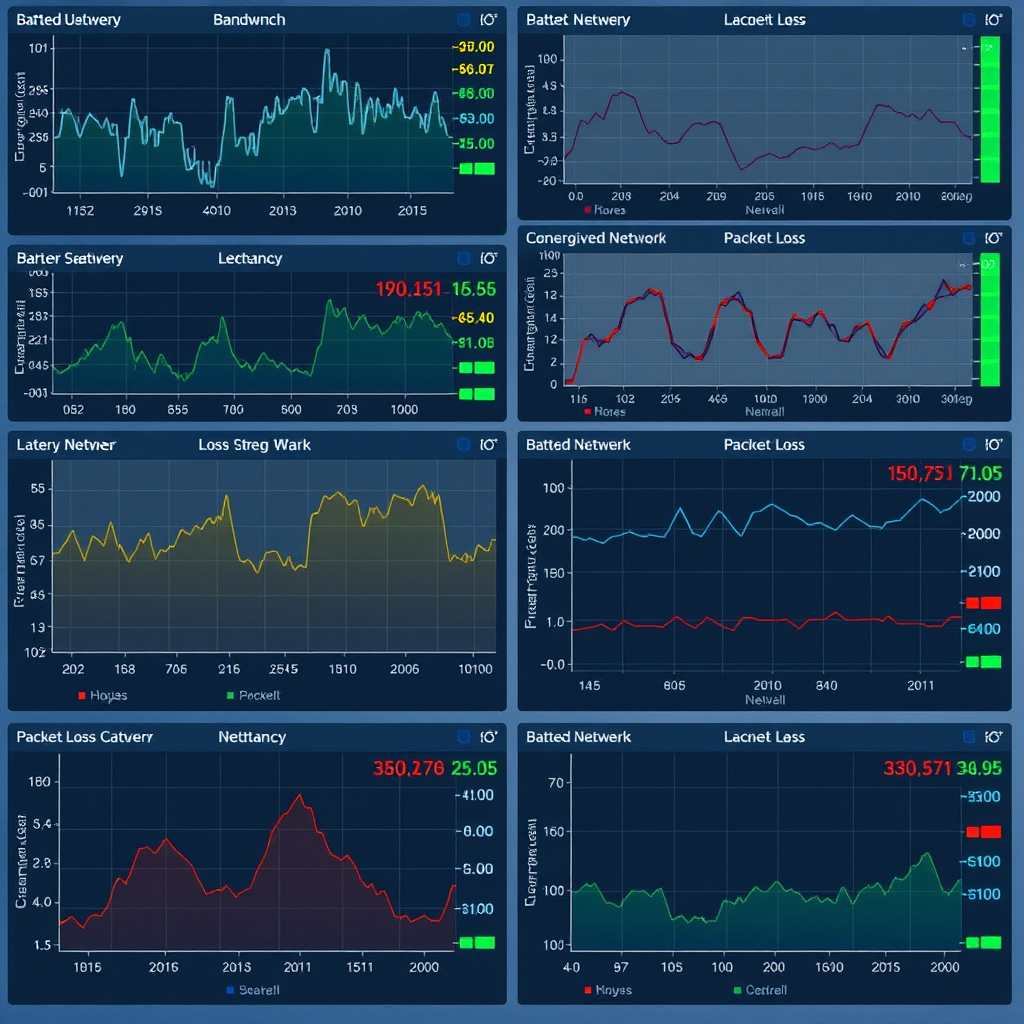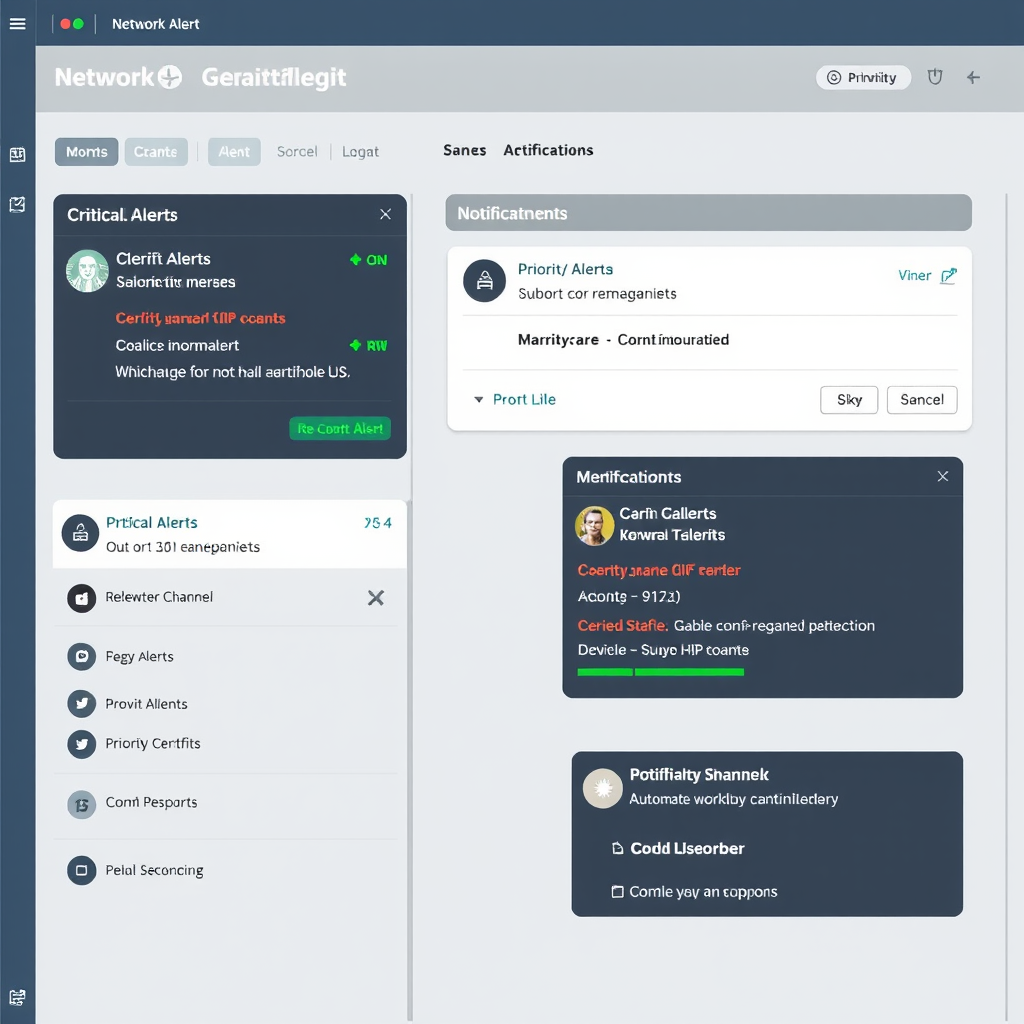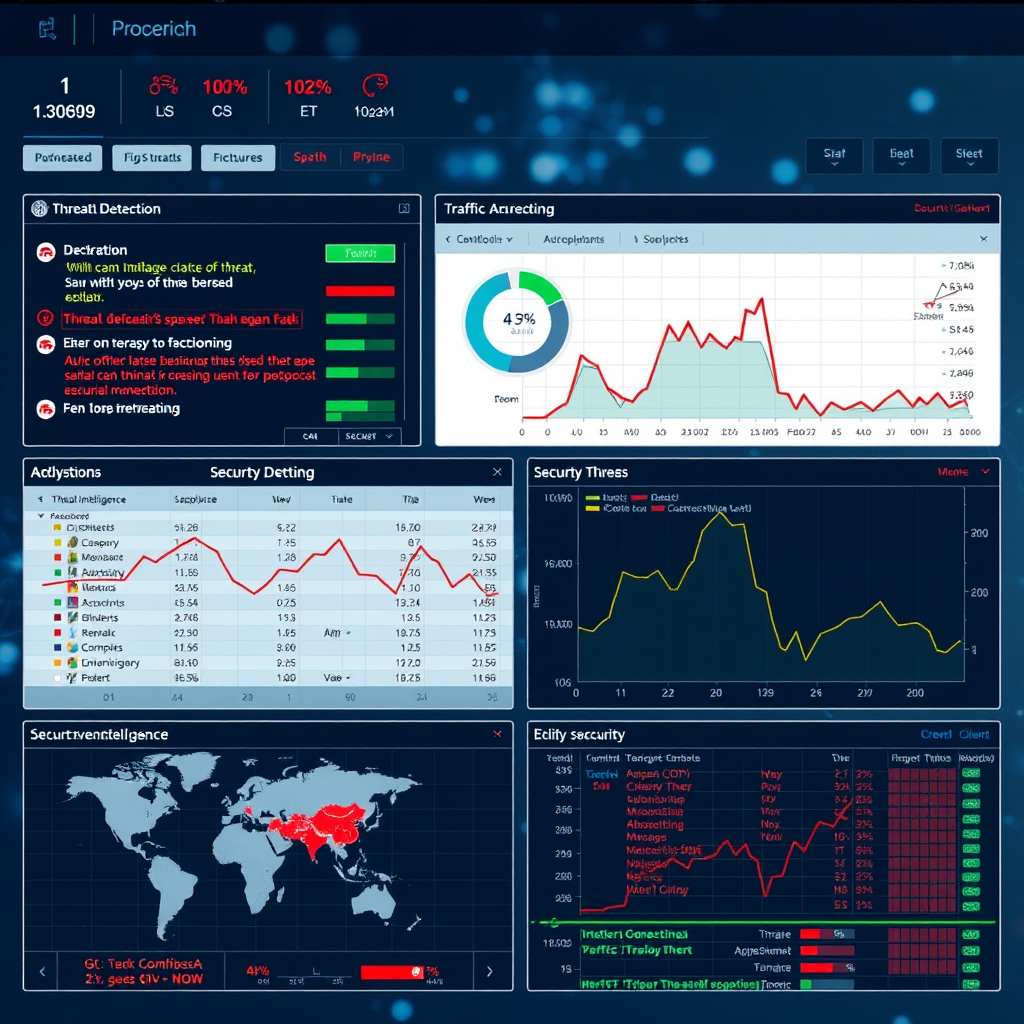Building Robust Network Monitoring Systems for Enterprise Environments
A detailed examination of enterprise-grade network monitoring solutions, including implementation strategies, performance metrics, and alerting systems. Learn how to design monitoring infrastructure that scales with your organization's growth and complexity.

The Critical Role of Network Monitoring in Modern Enterprises
In today's interconnected business landscape, network monitoring has evolved from a nice-to-have utility to an absolutely critical component of enterprise infrastructure. Organizations rely heavily on their networks to support everything from basic communication to complex cloud-based applications, making robust monitoring systems essential for maintaining operational continuity.
Enterprise network monitoring goes far beyond simple ping tests or basic connectivity checks. Modern monitoring solutions must provide comprehensive visibility into network performance, security threats, capacity utilization, and application dependencies. This level of insight enables IT teams to proactively address issues before they impact business operations.
Core Components of Enterprise Network Monitoring
Infrastructure Discovery and Mapping
Effective network monitoring begins with comprehensive discovery and mapping of your infrastructure. This includes automated detection of network devices, servers, applications, and their interdependencies. Modern ip scan tools play a crucial role in this process, providing detailed insights into network topology and device configurations.
Advanced discovery mechanisms should identify not only physical devices but also virtual machines, containers, and cloud resources, creating a unified view of your hybrid infrastructure.
Real-Time Performance Monitoring
Continuous monitoring of key performance indicators (KPIs) forms the backbone of any robust monitoring system. This includes tracking bandwidth utilization, latency, packet loss, error rates, and device health metrics across all network segments.
Performance data should be collected at appropriate intervals to balance accuracy with system overhead, typically ranging from 30-second intervals for critical infrastructure to 5-minute intervals for less critical components.

Implementation Strategies for Scalable Monitoring
Distributed Monitoring Architecture
Large enterprise environments require distributed monitoring architectures to handle the scale and complexity of modern networks. This approach involves deploying monitoring probes or collectors at strategic locations throughout the network, reducing bandwidth consumption and improving monitoring accuracy.
A well-designed distributed architecture includes regional monitoring hubs that aggregate data from local collectors, reducing the load on central monitoring servers while maintaining comprehensive visibility across geographically dispersed locations.
Protocol Selection and Optimization
Choosing the right monitoring protocols is crucial for system effectiveness. SNMP remains the standard for device monitoring, but modern implementations should also support newer protocols like NETCONF and RESTCONF for network device configuration and monitoring.
Traditional Protocols
- SNMP v2c/v3
- ICMP/Ping
- WMI (Windows)
- SSH/Telnet
Modern Protocols
- NETCONF/YANG
- REST APIs
- Streaming Telemetry
- gRPC
Advanced Alerting and Notification Systems

Effective alerting systems are the cornerstone of proactive network management. However, poorly configured alerts can quickly lead to alert fatigue, where critical notifications are ignored due to the overwhelming volume of false positives or low-priority alerts.
Intelligent Alert Correlation
Modern monitoring systems should implement intelligent alert correlation to reduce noise and provide meaningful insights. This involves grouping related alerts, suppressing duplicate notifications, and identifying root causes of cascading failures.
Machine learning algorithms can analyze historical alert patterns to improve correlation accuracy over time, automatically adjusting thresholds and reducing false positives based on network behavior patterns.
Multi-Channel Notification Strategy
Enterprise environments require flexible notification channels that can adapt to different severity levels and time-of-day requirements. This includes email, SMS, mobile push notifications, integration with collaboration platforms like Slack or Microsoft Teams, and automated ticket creation in ITSM systems.
Performance Metrics and KPI Framework
Establishing the right performance metrics is crucial for effective network monitoring. These metrics should align with business objectives and provide actionable insights for both technical teams and business stakeholders.
Availability Metrics
- Network uptime percentage
- Service availability
- Mean Time Between Failures (MTBF)
- Mean Time To Recovery (MTTR)
Performance Metrics
- Bandwidth utilization
- Latency and jitter
- Packet loss rates
- Throughput measurements
Capacity Metrics
- Resource utilization trends
- Growth rate analysis
- Capacity forecasting
- Threshold breach frequency
Security Integration and Threat Detection
Modern network monitoring systems must integrate security monitoring capabilities to detect and respond to potential threats. This includes monitoring for unusual traffic patterns, unauthorized access attempts, and potential data exfiltration activities.

Behavioral Analysis and Anomaly Detection
Advanced monitoring systems employ behavioral analysis to establish baseline network behavior and identify anomalies that may indicate security threats or performance issues. This approach is particularly effective for detecting zero-day attacks and insider threats that traditional signature-based systems might miss.
Machine learning algorithms analyze traffic patterns, user behavior, and device communications to identify deviations from normal operations, automatically flagging suspicious activities for further investigation.
Scalability and Future-Proofing Considerations
Enterprise monitoring systems must be designed with scalability in mind, capable of growing with the organization and adapting to new technologies. This includes support for cloud-native architectures, containerized applications, and emerging networking technologies like SD-WAN and 5G.
Cloud-Native Monitoring Approaches
As organizations increasingly adopt cloud and hybrid architectures, monitoring systems must extend beyond traditional on-premises infrastructure. This includes monitoring cloud services, serverless functions, and microservices architectures that may span multiple cloud providers.
Container orchestration platforms like Kubernetes require specialized monitoring approaches that can track ephemeral resources and dynamic service discovery, providing visibility into containerized applications and their underlying infrastructure.
Integration with DevOps and Automation
Modern monitoring systems should integrate seamlessly with DevOps workflows and automation platforms. This includes providing APIs for programmatic access to monitoring data, supporting infrastructure-as-code deployments, and enabling automated remediation actions based on monitoring insights.
Implementation Best Practices and Lessons Learned
Phased Deployment Strategy
Implementing enterprise-grade monitoring systems requires a carefully planned phased approach. Start with critical infrastructure components and gradually expand coverage to include all network elements. This approach allows teams to gain experience with the system while minimizing disruption to operations.
Each phase should include thorough testing, staff training, and documentation updates to ensure smooth transitions and knowledge transfer.
Staff Training and Change Management
The success of any monitoring implementation depends heavily on staff adoption and expertise. Invest in comprehensive training programs that cover not only system operation but also troubleshooting methodologies and best practices for interpreting monitoring data.
Change management processes should address workflow modifications, role responsibilities, and communication protocols to ensure the monitoring system enhances rather than hinders operational efficiency.

Measuring Success and Continuous Improvement
The effectiveness of network monitoring systems should be regularly evaluated against established metrics and business objectives. This includes measuring improvements in network uptime, reduction in mean time to resolution, and overall operational efficiency gains.
Regular reviews should assess the accuracy of alerting systems, the effectiveness of automated responses, and the value provided by monitoring insights. This data-driven approach enables continuous optimization of monitoring configurations and processes.
Return on Investment Analysis
Quantifying the ROI of monitoring investments helps justify continued investment and guides future enhancement decisions. This includes calculating cost savings from prevented outages, improved operational efficiency, and reduced manual troubleshooting efforts.
Advanced monitoring systems often pay for themselves through improved network reliability, faster problem resolution, and better capacity planning that prevents over-provisioning of network resources.
Conclusion: Building Monitoring Excellence
Building robust network monitoring systems for enterprise environments requires careful planning, appropriate technology selection, and ongoing commitment to operational excellence. The investment in comprehensive monitoring capabilities pays dividends through improved network reliability, enhanced security posture, and more efficient IT operations.
As networks continue to evolve with new technologies and architectures, monitoring systems must adapt to provide continued visibility and control. Organizations that invest in scalable, intelligent monitoring solutions position themselves for success in an increasingly connected business environment.